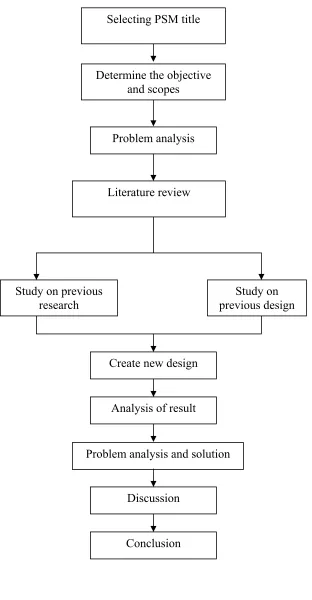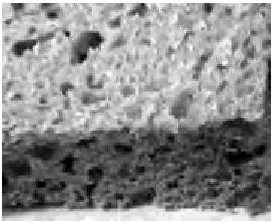STUDY ON THE PERFORMANCE OF CARBON ADSORBENT IN LPG TANK FOR SMALL ENGINE FUELLED BY LPG.
ISMANIZA BINTI ISMAIL
ISMANIZA BINTI ISMAIL
This report is written as a partial fulfillment of terms in achieving the award for Bachelor of Mechanical Engineering (Thermal-Fluid)
Faculty of Mechanical Engineering Universiti Teknikal Malaysia Melaka
‘I/We approve that we have read this thesis thoroughly and in my/ our opinion, this thesis is has fulfilled the criteria covering all the aspects of scope and quality and satisfied to be
awarded for Bachelor of Mechanical Engineering (Thermal-Fluid).’
Signature :………
Supervisor I :………
Date :...
Signature :………
“I admit that this report is all written by myself except for the summary and the article which I have stated the source for each of them.”
Signature :………
Writter :………
iii
ACKNOWLEDGEMENT
In this great opportunity, I would like to thank Allah for providing me strengths to finish up this project and finally it was completed. Here, I would like to acknowledge with appreciation to all those people who helped me numerously during finish up my project for this year.
In a particular, I would like to express my gratitude to my supervisor, Mr Safarudin Gazali Herawan for giving me a chance to do the project under his guide and attention. I also would like to forward my thanks to Mr Asjufri for giving me lots of guides and advices during implementation of this project. I would also forward my thanks to my second supervisor, Mr Zakaria Nasir who gave me advices and supports too. And not to forget to all panels that evaluated my presentation, a very big thanks to all of you.
v
ABSTRAK
ABSTRACT
vii
TABLE OF CONTENT
CHAPTER TITLE PAGES
DECLARATION ii
DEDICATION iii
ACKNOWLEDGEMENT iv
ABSTRAK v
ABSTRACT vi
CONTENT vii
LIST OF TABLE x
LIST OF FIGURE xi
LIST OF APPENDICES xv
CHAPTER 1 INTRODUCTION
1.1 Background Research 1
1.2 PSM Gantt Chart 3
1.3 Problem Analysis 4
1.4 Scope and Objective 5
CHAPTER 2 LITERATURE REVIEW
2.1 Activated Carbon 6
2.2 Source Material 7
2.3 Production 7
2.4.1 PAC 9
2.4.2 GAC 10
2.4.3 Pelleted activated carbon 10
2.4.4 Impregnated carbon 10
2.4.5 Polymers coated carbon 10
2.5 Characteristic of activated carbon 11 2.6 Surface properties for adsorption 11 2.7 Description of production process 12
2.8 Adsorption process 13
2.9 Liquefied Petroleum Gas (LPG) 15
2.10 Review from current research 18 2.11 Preparation of carbon adsorbent 18
CHAPTER 3 METHODOLOGY
3.0 Introduction 20
3.1 Collecting information 21
3.2 Design 21
3.2.1 Design concept 21
3.2.2 Part of design 23
3.3 Design and fabrication 24
3.4 Selecting material 27
3.5 Testing 27
3.5.1 Experimental rig for preparation carbon 28 adsorbent
ix
3.5.3 Preparation of carbon adsorbent using the 32 Compression method
3.5.4 Preparation of testing the performance of 35 Carbon adsorbent in LPG tank
3.6 Problem analysis and solution 36
CHAPTER 4 RESULTS AND DATA ANALYSIS
4.1 Experiment 1: Conventional Method 37 4.2 Experiment 2: Compression Method 38 4.3 Experiment 3: Testing Performance 40
CHAPTER 5 DISCUSSION 44
CHAPTER 6 CONCLUSION AND SUGGESTIONS 46
REFERENCES 49
LIST OF TABLES
NO. TITLES PAGES
2.1 The properties of LPG 17
4.1 Weight of samples at 700°C after pyrolisis process 37 4.2 Weight and force of sample at different temperature 38 4.3 Weight of gas adsorbed for various sample due to different 42
xi
LIST OF FIGURES
NO. TITLES PAGES
1.1 PSM Gantt chart. 3
2.1 Activated carbon 6
2.2 Close up of sample activated carbon 6
2.3 Carbonized coconut 8
2.4 Activated coconut 8
2.5 Production activated carbon chart 8
2.6 PAC 9
2.7 GAC 10
2.8 Close up of carbon surface and pores magnification 12 increases from left to right
2.9 LPG cylinder tank 15
3.1 Methodology chart 20
3.2 Current design for conventional method 22
3.4 Concept design of top part 23
3.5 Concept design of reactor 24
3.6 Design for reaction body part 1 in 2D view 25
3.7 Design for reaction body part 2 in 2D view 25
3.8 Design of top part in 2D view 26
3.9 Design of plate sieve in 2D view 26
3.10 Sieve is located below the top part surface 27
3.11 Sieve is located inside the reactor 27
3.12 Sieve of size 250 – 425 μm 28
3.13 Sample of granular 28
3.14 Sample of particles 29
3.15 Sample of powder 29
3.16 Current design of reactor 30
xiii
3.18 Nitrogen and carbon dioxide gas tank 30
3.19 Control meter of gas flow rate 31
3.20 Process using compression method 32
3.21 Sample is being weighed 32
3.22 New design of reactor 33
3.23 Hydraulic jack 33
3.24 Top plate 33
3.25 Process using compression method 34
3.26 Top view of the process by using compression method 34
3.27 Location of force gauge 35
3.28 Cylindrical test bed on the digital balance 36
3.29 LPG’s tank that used in adsorption test 36
4.1 Graph of weight changes for samples using conventional 38 method
4.2(b) Graph of weight against temperature in compression 40 method
4.2(c) Graph of weight changes at different temperature in 41 compression method
4.3(a) Graph of weight for gas adsorbed against different 43 temperature
4.3(b) Graph of weight change for all samples 44
xv
LIST OF APPENDICES
NO. TITLE PAGES
A LPG 53
INTRODUCTION
Carbon adsorbent is also known as activated carbon. The active carbon is a material with an exceptionally high surface area. One gram of activated carbon has a surface area of approximately 500 m2, typically determined by nitrogen gas adsorption, and includes a large amount of microporosity.
The active carbon can be produced in different process from a variety of carbonaceous source materials such as coconut shells, coal, walnut shell, palm date pits, nutshell and oil palm shell. The two different processes include physical reactivation and chemical activation.
2
1.1 Background research
In order to reduce air pollution, many countries had used LPG as an alternative way replacing natural gas and petrol as a fuel in their vehicles. The use of LPG is more economic because it is simply to prepare and easy to use as the LPG is not using the high pressure tank compared to natural gas.
Many researches are being done to improve the use of LPG in the automotive industry. One of the current researches is to develop LPG and methane gas storage as the alternative fuels for vehicles based upon the carbon adsorbent. Carbon adsorbent or active carbon is used as a gas storage media for LPG is an alternative way to overcome the disadvantages of pressurized vessel such as high pressure flammable gas content, dimension of gas tank and other dangerous aspects.
Determine the objective and scopes
Problem analysis
Study on previous
research previous design Study on
Problem analysis and solution Create new design
Analysis of result
Discussion
[image:20.612.176.488.106.706.2]Conclusion Literature review
4
1.3 Problem Analysis
Liquefied petroleum gas (LPG) is used to replace the petrol because of the fuel cost is rapidly increase nowadays. Using LPG as a fuel for vehicles give more advantages than the others fuel. This is because the LPG is more economic and is not using high pressure tank.
In application for the vehicles, a small tank for LPG storage with high capacity is needed. In order to increase the storage capacity in small LPG tank, carbon adsorbent is used. Carbon adsorbent has a potential to adsorb LPG due to its characteristics. Carbon adsorbent was prepared by the process of carbonization and activation on previous research.
increasing the storage capacity. Scopes
• Design and develop an experimental rig for preparing carbon adsorbent
6
CHAPTER 2
LITERATURE REVIEW
2.1 Activated carbon
[image:23.612.259.395.373.484.2]Carbon adsorbent is also known as activated carbon. The activated carbon is a material with an exceptionally high surface area. One gram of activated carbon has a surface area of approximately 500 m2, typically determined by nitrogen gas adsorption, and includes a large amount of microporosity.
Figure 2.1 Activated carbon
[image:23.612.147.510.535.637.2]include coconut shells, coal, walnut shell, palm date pits, nutshell and oil palm shell.
2.3 Production
There are two different processes in producing the activated carbon. It can be produced using one of the two following processes:
1. Physical reactivation: The precursor is developed into activated carbons using gases. This is generally done by using one or combining the following processes:
• Carbonization: material with carbon content is pyrolysed at temperatures in the range 600-900°C, in absence of air (usually in inert atmosphere with gases like nitrogen)
• Activation/oxidation: raw material or carbonized material is exposed to oxidizing atmospheres (carbon dioxide, oxygen, or steam) at temperature above 250°C, usually in the temperature range 600-1200°C.

